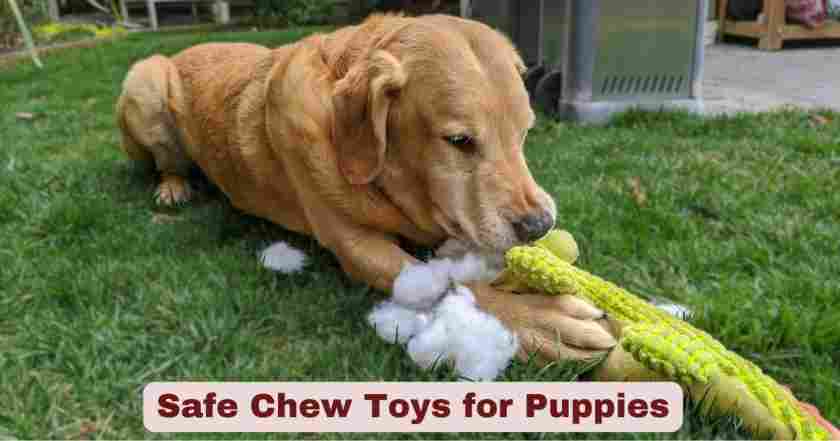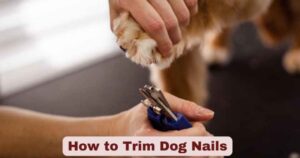Bringing home a new puppy is one of life’s greatest joys, but it also comes with unique challenges and responsibilities. One of the most important decisions you’ll make as a new pet parent is selecting appropriate chew toys for your growing companion. Safe chew toys for puppies are not just entertainment—they’re essential tools for healthy development, teething relief, and preventing destructive behavior.
Puppies have an innate need to chew, which serves multiple biological and psychological purposes. From soothing teething discomfort to exploring their environment, chewing is a natural behavior that shouldn’t be discouraged but rather channeled appropriately. The key lies in providing the right toys that satisfy this instinct while ensuring your puppy’s safety and well-being.
This comprehensive guide will walk you through everything you need to know about selecting, using, and maintaining safe chew toys for your puppy. Whether you’re a first-time pet owner or looking to upgrade your current toy collection, this article provides expert-backed information to help you make informed decisions for your furry friend’s health and happiness.
1. Understanding Why Puppies Need to Chew
1.1 The Science Behind Puppy Chewing Behavior
Chewing is a fundamental behavior that serves multiple critical functions in a puppy’s development. Unlike adult dogs who may chew primarily for entertainment or stress relief, puppies chew for several developmental reasons that are crucial to their physical and mental health.
The teething process begins around 3-4 weeks of age when puppies start developing their first set of teeth, known as deciduous or “milk” teeth. This process continues until approximately 6-8 months of age, making the selection of appropriate chew toys absolutely vital during this extended period.
1.2 Physical Benefits of Appropriate Chewing
• Teething Relief: Proper chew toys provide soothing pressure that helps alleviate the discomfort associated with emerging teeth • Jaw Muscle Development: Regular chewing strengthens jaw muscles and promotes proper dental alignment • Tooth Cleaning: Certain textures help remove plaque and food particles naturally • Gum Health: Gentle chewing action stimulates blood flow to the gums, promoting healthy tissue development
1.3 Mental and Behavioral Benefits
Beyond physical health, appropriate chewing activities provide significant mental stimulation and behavioral benefits. Chewing releases endorphins that help puppies feel calm and content, reducing anxiety and stress. This natural behavior also serves as a form of mental exercise, helping to tire out energetic puppies and promote better sleep patterns.
• Stress Reduction: Chewing triggers the release of calming endorphins • Mental Stimulation: Interactive chew toys challenge problem-solving abilities • Boredom Prevention: Appropriate outlets prevent destructive chewing behaviors • Independence Building: Solo chewing activities help puppies learn to self-soothe
2. Essential Safety Criteria for Puppy Chew Toys
2.1 Size Specifications and Choking Prevention
The size of a chew toy is perhaps the most critical safety factor to consider when selecting safe chew toys for puppies. A toy that’s too small poses an immediate choking hazard, while one that’s too large may be difficult for your puppy to manipulate and enjoy properly.
The general rule of thumb is that any chew toy should be large enough that it cannot fit entirely into your puppy’s mouth. A good test is to ensure the toy is at least 1.5 times the width of your puppy’s mouth when fully opened. This prevents the toy from sliding back into the throat area where it could become lodged.
2.2 Material Safety Standards
• Non-Toxic Certification: Look for toys certified by recognized safety organizations • BPA-Free Construction: Avoid toys containing harmful chemicals like BPA, phthalates, or lead • Natural Materials: Priority should be given to toys made from natural rubber, organic cotton, or untreated wood • Durability Testing: Choose toys that have undergone rigorous durability testing to prevent breakage
2.3 Hardness and Texture Guidelines
The hardness of a chew toy should match your puppy’s current teething stage and jaw strength. Veterinary dentists recommend the “thumbnail test”—if you cannot make an indent in the toy with your thumbnail, it’s likely too hard for your puppy’s developing teeth.
Appropriate texture variations include: • Soft Rubber: Ideal for young puppies (8-16 weeks) • Medium Density: Suitable for adolescent puppies (4-8 months) • Textured Surfaces: Beneficial for dental health and gum massage • Rope Fibers: Natural cotton rope provides gentle abrasion for cleaning
3. Top-Rated Safe Chew Toy Categories
3.1 Rubber Chew Toys
High-quality rubber chew toys represent the gold standard in puppy safety and durability. Natural rubber toys offer the perfect balance of firmness and flexibility, providing satisfying chewing resistance while being gentle on developing teeth and gums.
Key features of quality rubber chew toys include: • Natural Rubber Construction: Made from sustainably sourced, non-synthetic materials • Hollow Design Options: Can be stuffed with treats for extended engagement • Various Hardness Levels: Available in different densities for different life stages • Easy Cleaning: Dishwasher-safe options for optimal hygiene
3.2 Interactive Puzzle Chew Toys
Interactive puzzle chew toys combine the benefits of mental stimulation with safe chewing activities. These toys challenge your puppy’s problem-solving abilities while satisfying their natural urge to chew and explore.
Popular interactive features include: • Treat-Dispensing Mechanisms: Reward-based play that encourages persistence • Multiple Textures: Different surfaces provide varied sensory experiences • Adjustable Difficulty: Can be modified as your puppy’s skills develop • Supervised Play Options: Some designs are perfect for interactive playtime with owners
3.3 Natural Fiber Rope Toys
When properly constructed from natural materials, rope toys offer excellent texture variety and dental benefits. The key is selecting ropes made from organic cotton or hemp fibers that won’t pose digestive risks if small amounts are ingested.
Safety considerations for rope toys: • Supervised Use: Monitor for excessive fiber consumption • Regular Inspection: Check for loose or fraying strands • Natural Fiber Only: Avoid synthetic materials that could cause blockages • Appropriate Size: Ensure rope thickness matches your puppy’s mouth size
3.4 Frozen and Cooling Toys
Cooling toys provide exceptional relief for teething puppies by numbing sore gums and reducing inflammation. These specialized toys can be filled with water or puppy-safe liquids and frozen to create soothing chew experiences.
Benefits of cooling chew toys: • Immediate Pain Relief: Cold temperatures numb teething discomfort • Extended Engagement: Frozen toys typically last longer during chew sessions • Hydration Support: Water-filled options help maintain proper hydration • Summer Cooling: Provide additional benefits during hot weather
4. Age-Appropriate Toy Selection Guidelines
4.1 Young Puppies (8-16 Weeks)
During the earliest puppy stages, soft and flexible toys are essential for protecting delicate baby teeth and sensitive gums. Young puppies are just beginning to explore their chewing instincts, so gentle introduction to appropriate toys is crucial.
Recommended toy characteristics for young puppies: • Extra Soft Materials: Pliable rubber or soft fabric options • Small Size Adjustments: Proportionate to tiny mouths but still safe • Minimal Complexity: Simple designs that don’t overwhelm • Easy Grip: Shapes that accommodate uncoordinated puppy movements
4.2 Adolescent Puppies (4-8 Months)
As puppies enter their most intensive teething phase, they require more durable toys that can withstand increased chewing intensity. This period often coincides with the highest risk for destructive behavior if appropriate outlets aren’t provided.
Essential features for adolescent puppy toys: • Increased Durability: Medium-hard materials that resist destruction • Larger Sizes: Proportionate growth in toy size as puppies develop • Complex Textures: Multiple surface types for varied sensory input • Interactive Elements: Puzzle features to challenge developing intelligence
4.3 Transitioning to Adult Toys (8+ Months)
The transition period requires careful monitoring to ensure toys remain appropriately challenging without becoming too difficult. Many puppies can begin using adult-oriented chew toys during this phase, but individual development varies significantly.
Transition considerations include: • Gradual Introduction: Slowly introduce harder materials • Continued Supervision: Monitor for any signs of tooth damage • Size Upgrades: Regular assessment of appropriate toy sizing • Preference Development: Allow puppy to show preferences for certain toy types
5. Materials to Avoid: Dangerous Chew Toy Components
5.1 Hard Materials That Damage Teeth
Certain materials that might seem durable and long-lasting can actually cause serious dental damage to developing puppy teeth. Understanding which materials to avoid is just as important as knowing which ones to choose.
Dangerous hard materials include: • Real Bones: Cooked bones can splinter; raw bones may be too hard • Antlers: Extremely hard and can fracture teeth • Nylon Bones: Often too rigid for safe puppy use • Hard Plastic: Can crack teeth and create sharp edges when damaged
5.2 Toxic Substances and Chemical Hazards
Many toys contain hidden chemical hazards that can pose serious health risks to puppies. Always research manufacturers and look for safety certifications before making purchases.
Chemical hazards to avoid: • Lead-Based Paints: Particularly common in imported toys • Phthalates: Plasticizers that can disrupt hormonal development • Formaldehyde: Sometimes used in manufacturing processes • Artificial Dyes: Can cause allergic reactions and digestive issues
5.3 Small Parts and Choking Hazards
Even well-intentioned toy purchases can become dangerous if they contain detachable small parts. Regular inspection of all toys is necessary to identify potential hazards before they become problems.
Common choking hazards include: • Squeakers: Can be extracted and swallowed • Button Eyes: Often poorly attached to plush toys • Decorative Elements: Bows, ribbons, or ornamental pieces • Worn Components: Parts that become loose through normal use
6. Proper Introduction and Supervision Techniques
6.1 Initial Toy Introduction Protocols
The way you introduce new chew toys can significantly impact your puppy’s acceptance and safe usage patterns. Proper introduction helps establish positive associations while ensuring safety from the very first interaction.
Successful introduction steps: • Supervised First Use: Always monitor initial interactions with new toys • Positive Association: Introduce toys during calm, happy moments • Gradual Exposure: Allow sniffing and investigation before active play • Reward Appropriate Use: Praise and treat when puppy uses toy correctly
6.2 Ongoing Supervision Requirements
Even the safest toys require ongoing supervision to ensure continued safe use. Establishing regular monitoring routines helps identify potential problems before they become serious safety issues.
Essential supervision practices include: • Daily Visual Inspections: Check for damage, wear, or loose parts • Active Play Monitoring: Watch for inappropriate chewing behaviors • Time Limits: Establish reasonable play session durations • Environmental Safety: Ensure play area is free from additional hazards
6.3 Teaching Appropriate Chewing Behaviors
Consistent training helps puppies understand which items are appropriate for chewing and which are off-limits. This education process is crucial for preventing destructive behaviors and maintaining household harmony.
Training techniques include: • Redirect and Replace: Substitute inappropriate items with approved toys • Consistent Commands: Use the same verbal cues for chewing directions • Positive Reinforcement: Reward appropriate chewing choices immediately • Environmental Management: Remove tempting inappropriate items from reach
7. Maintenance, Cleaning, and Replacement Guidelines
7.1 Regular Cleaning Protocols
Maintaining proper hygiene for chew toys is essential for preventing bacterial growth and ensuring continued safety. Different materials require specific cleaning approaches to maintain their integrity while eliminating harmful microorganisms.
Cleaning guidelines by material type:
Rubber Toys: • Daily Rinsing: Quick water rinse after each use • Weekly Deep Clean: Scrub with pet-safe soap and warm water • Dishwasher Safe: Many can be cleaned in top rack of dishwasher • Air Drying: Always allow complete drying before storage
Rope and Fabric Toys: • Machine Washing: Use gentle cycle with pet-safe detergent • Hot Water Treatment: Helps eliminate bacteria and parasites • Complete Drying: Ensure no moisture remains to prevent mold • Regular Replacement: More frequent replacement due to wear patterns
7.2 Wear Assessment and Replacement Indicators
Knowing when to replace chew toys is crucial for maintaining safety standards. Even the highest quality toys will eventually show wear that compromises their safety and effectiveness.
Replacement indicators include: • Visible Damage: Cracks, tears, or structural compromise • Size Changes: Toys that have worn down to unsafe sizes
• Sharp Edges: Any development of rough or sharp surfaces • Loose Components: Parts that move or separate unexpectedly
7.3 Storage and Organization Best Practices
Proper storage extends toy life and maintains hygiene between uses. Organized storage also helps you rotate toys effectively to maintain your puppy’s interest and engagement.
Storage recommendations: • Clean and Dry: Only store completely clean and dry toys • Ventilated Containers: Avoid airtight storage that traps moisture • Rotation System: Keep some toys stored while others are in use • Easy Access: Store in locations convenient for supervision and monitoring
8. Budget-Friendly Safety: Quality Without Breaking the Bank
8.1 Cost-Effective Shopping Strategies
Providing safe chew toys for puppies doesn’t require a massive financial investment when you know how to shop strategically. Smart shopping can help you build a comprehensive toy collection while staying within budget constraints.
Money-saving approaches include: • Bulk Purchasing: Buy multipacks when toys are on sale • Seasonal Shopping: Take advantage of pet store clearance events • Generic Alternatives: Research store brands that meet safety standards • DIY Options: Create safe toys from household materials when appropriate
8.2 DIY Safe Chew Toy Options
With proper knowledge and materials, you can create safe and engaging chew toys at home. DIY options allow customization for your specific puppy’s needs while maintaining strict safety standards.
Safe DIY projects include: • Frozen Kong Alternatives: Use ice cube trays with puppy-safe liquids • Braided Rope Toys: Create from organic cotton rope or old t-shirts • Cardboard Puzzle Toys: Design treat-dispensing games from safe cardboard • Supervised Sock Toys: Use clean socks filled with other socks (supervision required)
8.3 When to Invest in Premium Options
While budget-friendly options work well for many situations, certain circumstances justify investing in premium chew toys. Understanding when to splurge helps you allocate your budget most effectively.
Premium investment scenarios: • Aggressive Chewers: Puppies who destroy standard toys quickly • Specific Health Needs: Special requirements due to dental or digestive issues • Long-Term Value: Toys that will grow with your puppy into adulthood • Multi-Dog Households: Durable options that can safely accommodate multiple pets
Conclusion: Making the Right Choice for Your Puppy’s Safety and Happiness
Selecting appropriate safe chew toys for puppies is one of the most important investments you can make in your new companion’s health, development, and happiness. The right toys not only provide essential teething relief and mental stimulation but also help establish positive behaviors that will benefit your relationship for years to come.
Remember that every puppy is unique, and what works perfectly for one may not be ideal for another. Pay attention to your puppy’s individual preferences, chewing style, and developmental needs. Regular monitoring and assessment ensure that your toy choices continue to meet safety standards as your puppy grows and changes.
The key to success lies in combining quality products with proper supervision, regular maintenance, and ongoing education about safe chewing practices. By investing time in understanding your puppy’s needs and consistently providing appropriate outlets for their natural chewing instincts, you’re setting the foundation for a lifetime of healthy, happy behaviors.
Safe chew toys for puppies represent far more than simple entertainment—they’re essential tools for raising a well-adjusted, healthy, and happy dog. Take the time to choose wisely, monitor consistently, and enjoy watching your puppy develop into the wonderful companion they’re destined to become. With the right approach to chew toy selection and management, you’ll help ensure that your puppy’s natural chewing instincts become a source of joy rather than frustration for your entire family.







